European Holiday June-July 2017
The jet lag is kicking in. We awake at 4:30am which is about 12:30pm Sydney time. The body is not quite settled into the new routine yet, but a few more long and busy days in the new time zone should sort it out.
We had breakfast in the substantial buffet on the second floor of the Hotel. Plenty of variety and seemingly no limit to the backup supplies, which were put to the test by several of our party.
Everyone shared their stories of waking up at about 3:00am and not
sdodson55
17 chapters
Prague - the Tour Begins
June 27, 2017
|
Prague, Czech Republic
The jet lag is kicking in. We awake at 4:30am which is about 12:30pm Sydney time. The body is not quite settled into the new routine yet, but a few more long and busy days in the new time zone should sort it out.
We had breakfast in the substantial buffet on the second floor of the Hotel. Plenty of variety and seemingly no limit to the backup supplies, which were put to the test by several of our party.
Everyone shared their stories of waking up at about 3:00am and not
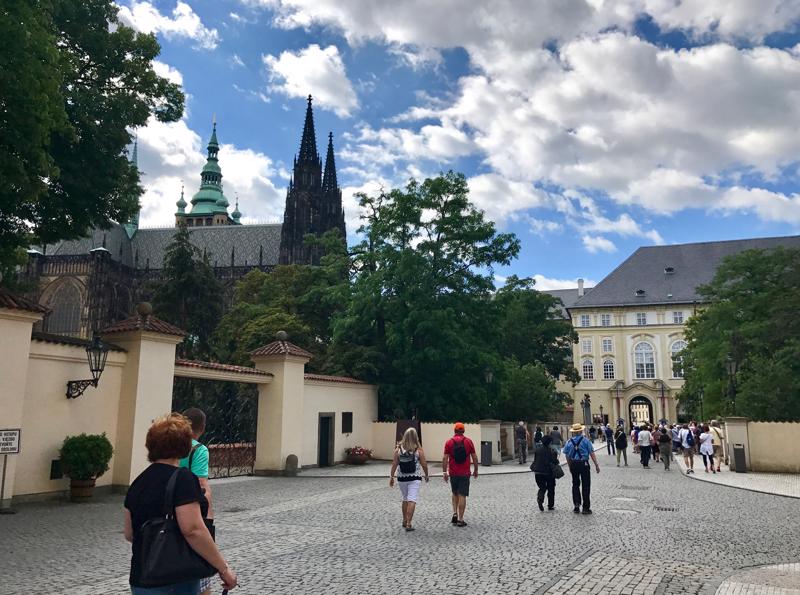
being able to get back to sleep due to jet lag.
We were met by a Czech guide named Renata at 9:00am in the foyer of the hotel. After brief introduction we hopped on the bus to travel to the Prague Castle. We joined the queue to go through security and went for a tour around the outside of the castle. It is still the official office of the President of the Czech Republic so much of the castle is off-limits to tourists. The castle grounds includes a range of buildings and churches, including the grand Cathedral, the build of which was begun in the medieval period and only completed in the 20th century. The various building styles and architectural variations can be seen as the building progressed over many centuries to completion.
We were taken on a bus tour of the city, mainly focussing on areas around the beautiful Vltava River (known in German as the Moldau). The bridges crossing the river make a beautiful scene, particularly
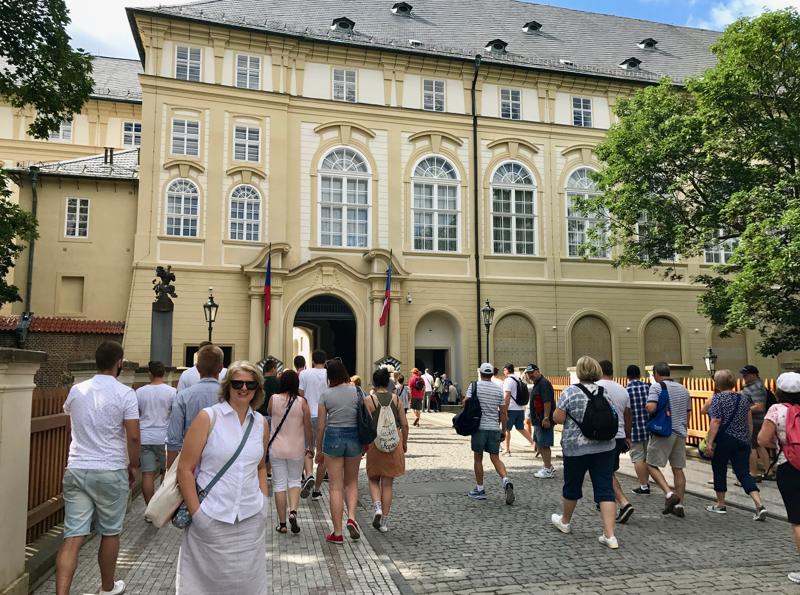
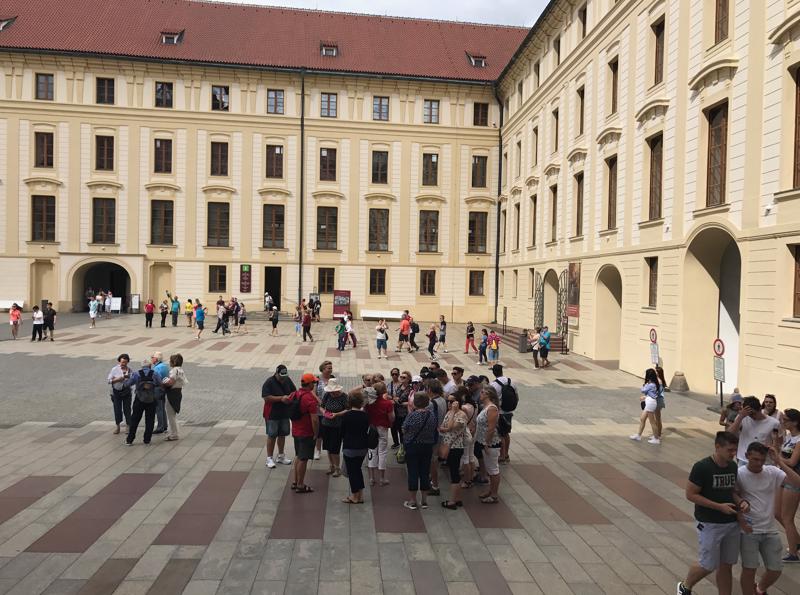
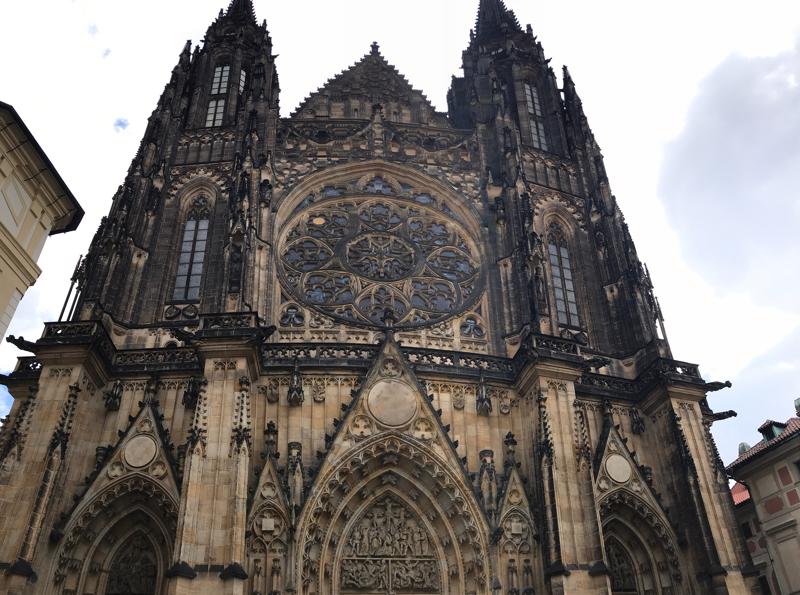

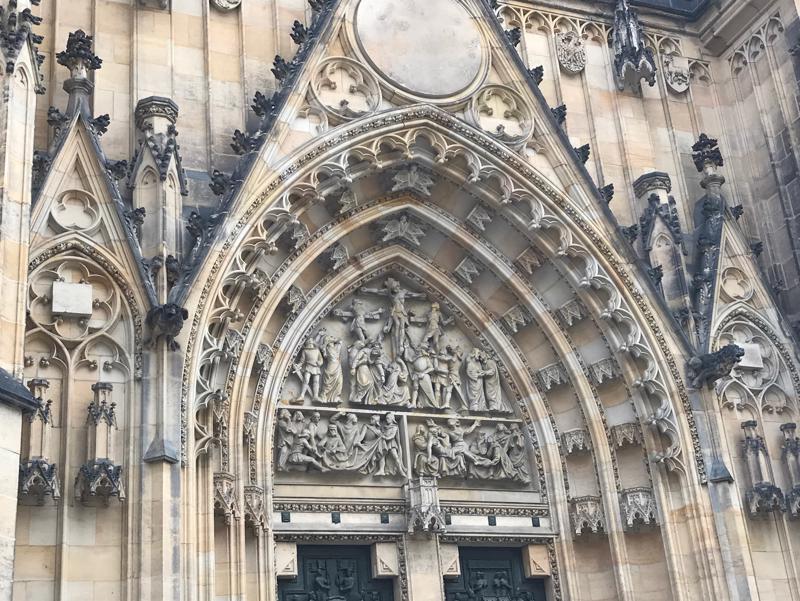
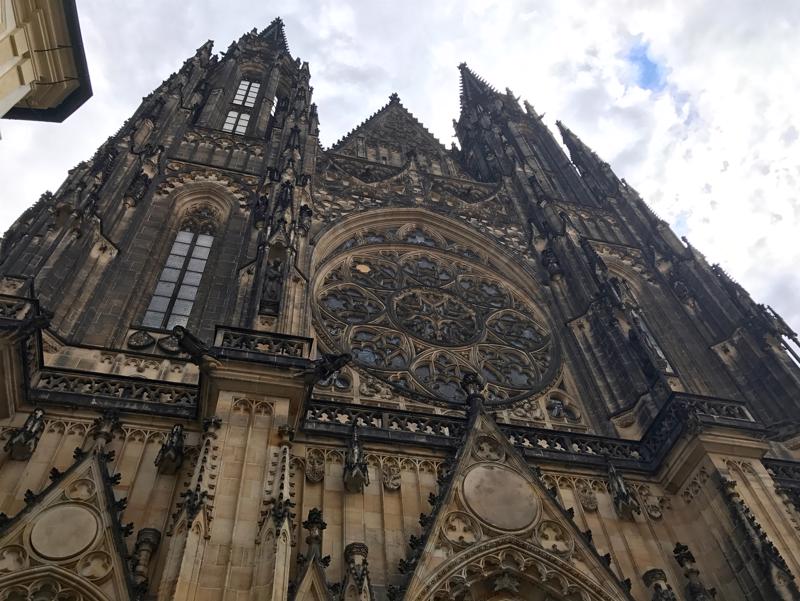
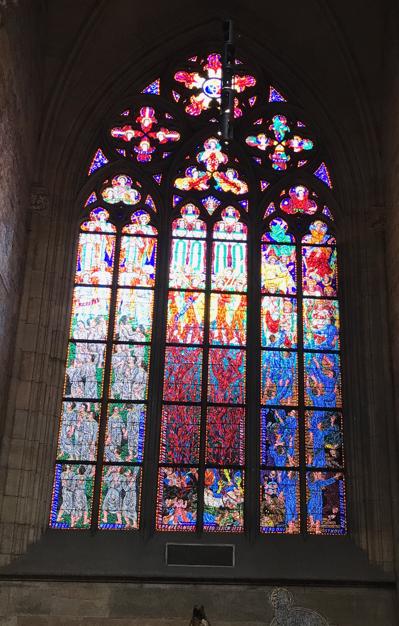
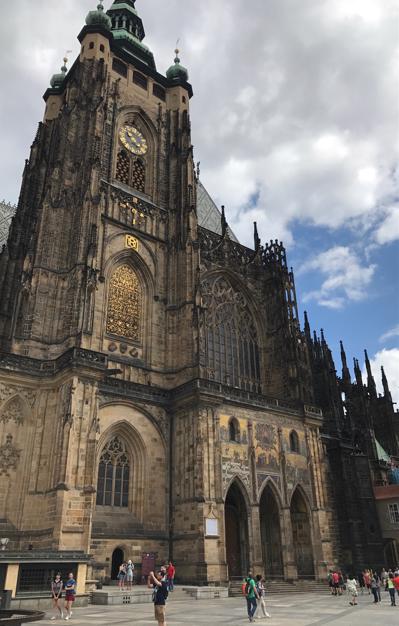


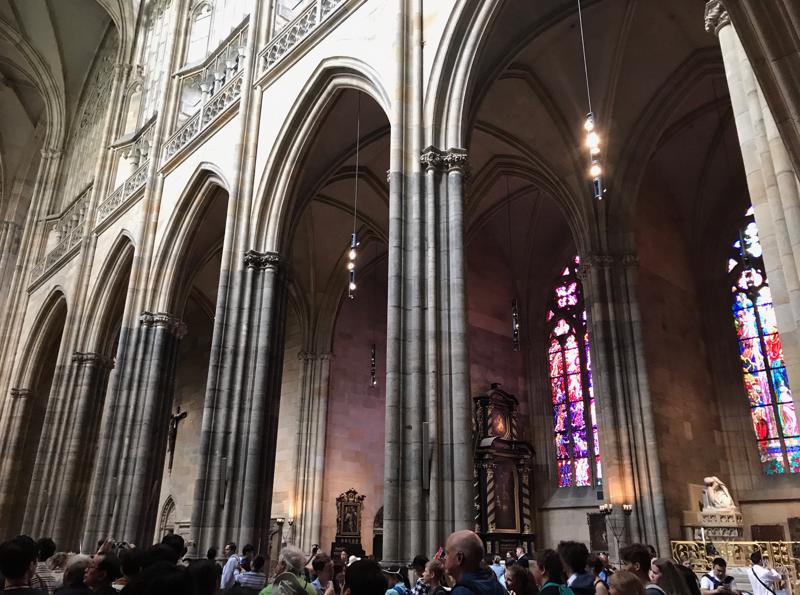
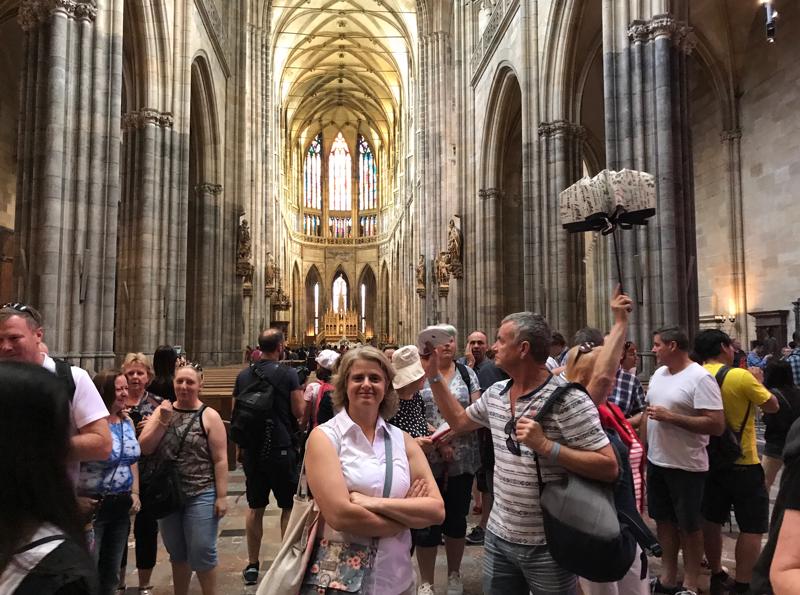
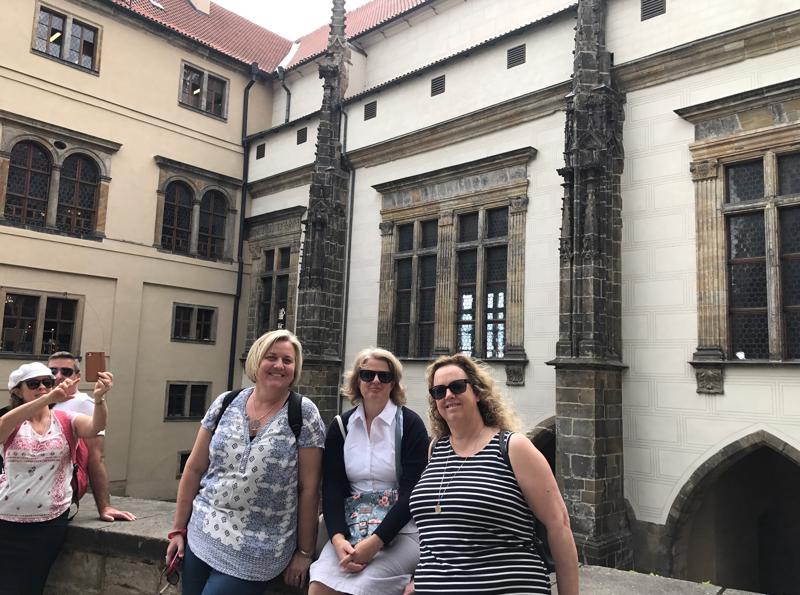
the Charles Bridge which was constructed in the 14th century, beginning in 1357.
We were dropped off near the river to begin a walking tour of Prague. We went first through the famous Jewish Ghetto in which the Jews were confined for much of their history in Prague. There have been many great buildings in this area destroyed but there are still a few significant ones that remain. These Jewish buildings and synagogues, including a graveyard, form the Prague Jewish Museum. The Jewish community in Prague is now about 3000 people, but prior to WW3 there were over 100,000 Jews here and it was a thriving and wealthy community.
After walking through the Jewish Ghetto, with plans to return in the afternoon, we walked to the Old Town Square and watched the
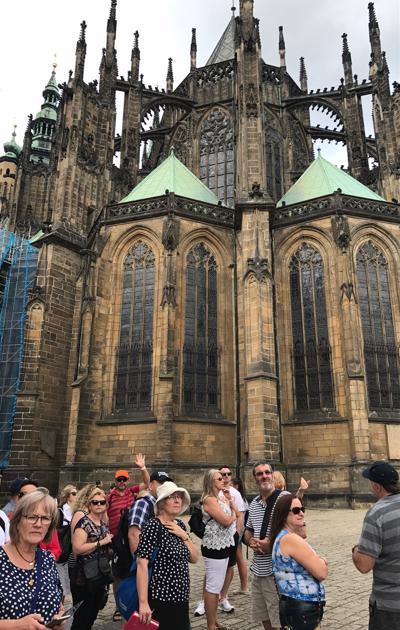
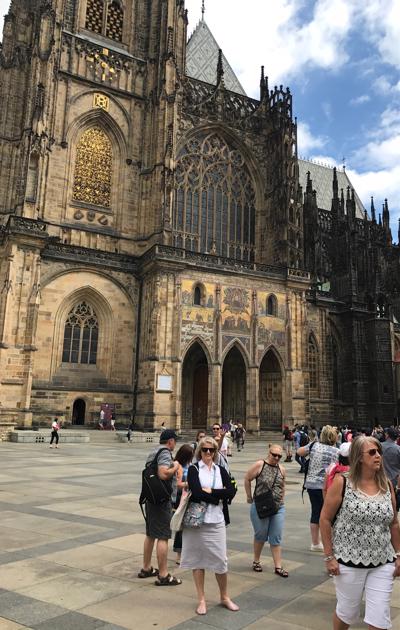
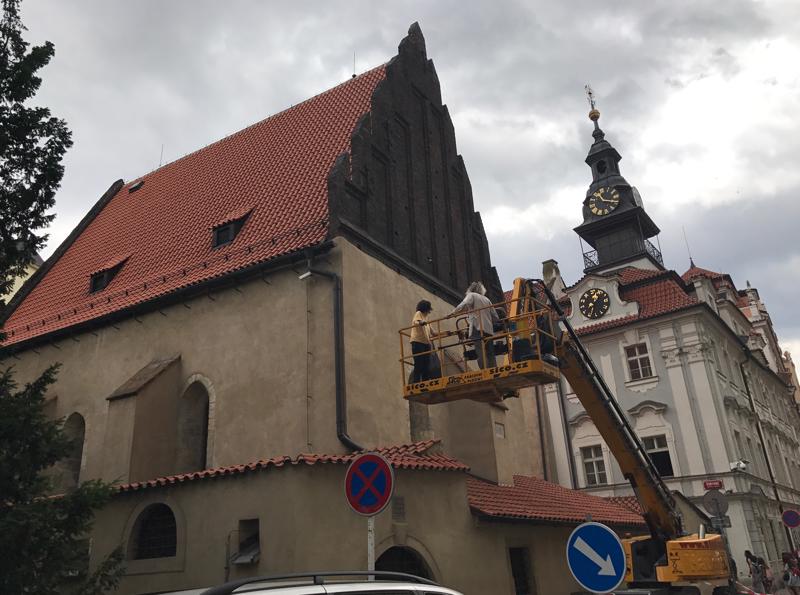
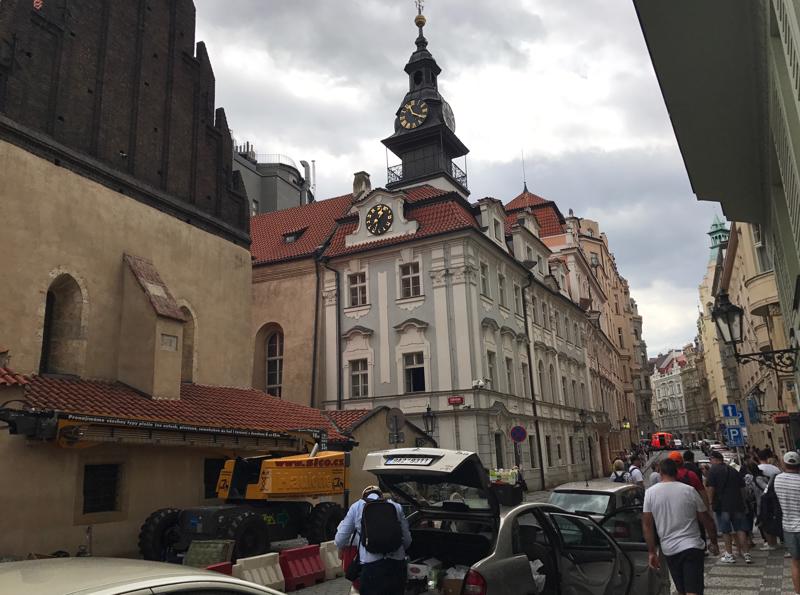
Astronomical clock strike 12. We realised some more features of the clock the second time around. There are four human figurines on the face of the clock. One is a skeleton which rings the bell throughout the short animation. He is shaking his head to remind us that time is passing and death awaits us all in time. There is also a man with a mirror shaking his head, representing the condemnation of the sin of vanity. There is a man holding a bag of money (looking very Jewish) also shaking his head representing the condemnation of greed. The final figure is playing a lute, also shaking his head condemning the sin of hedonism. All these messages being clearly communicated via this clock to the people of Prague every hour since 1410 .
After the tour concluded just after 12:00pm we looked desperately for coffee. We found a really nice coffee shop and had a break and lots to drink after feeling quite dehydrated. After that we sampled som more Prague ice-cream in the curly pastry that is so common here.

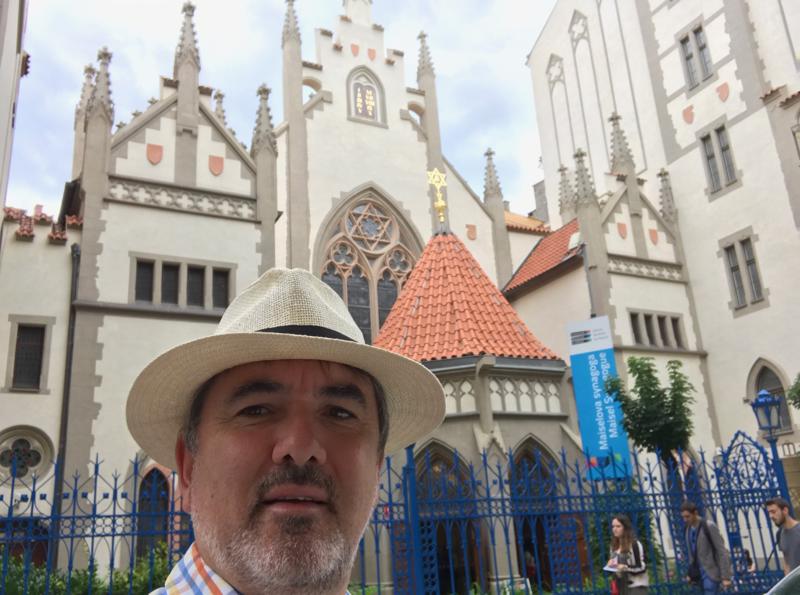
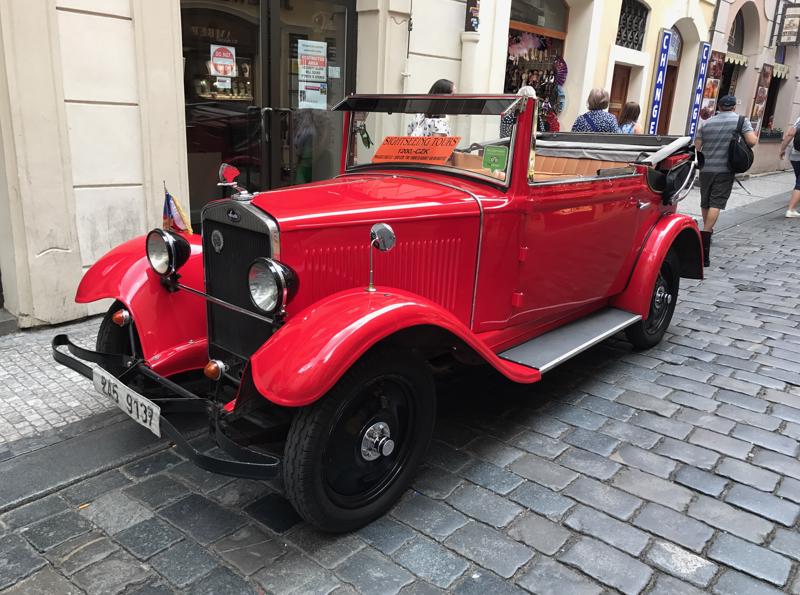
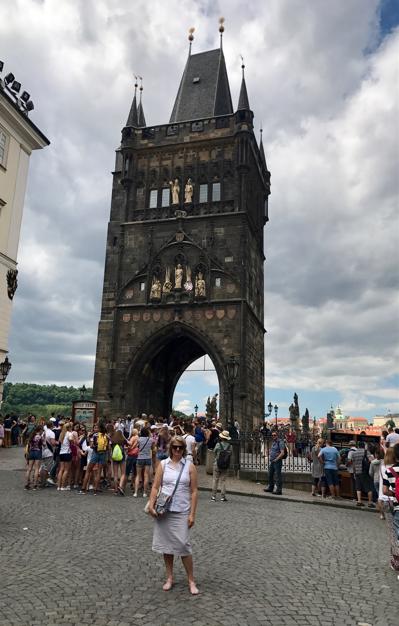
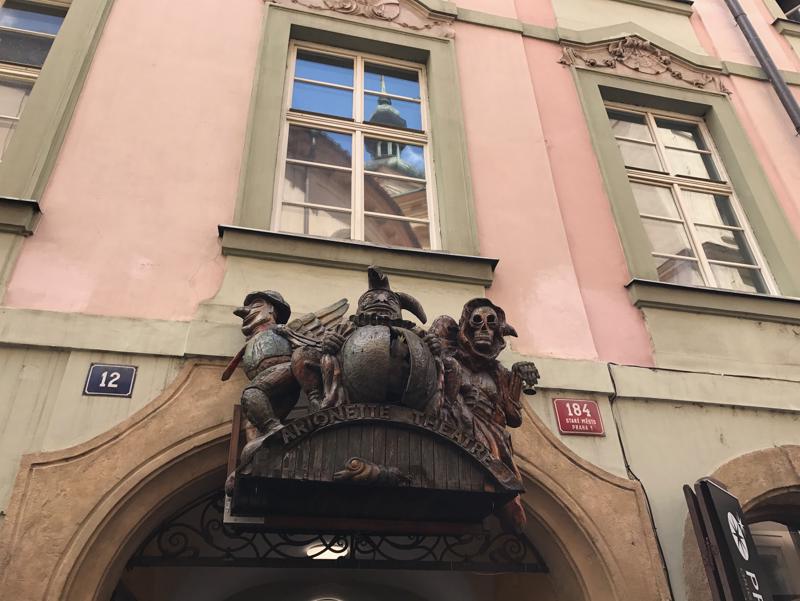
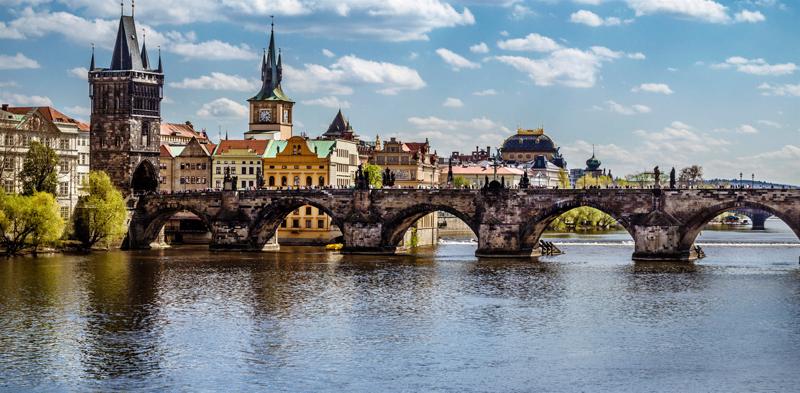
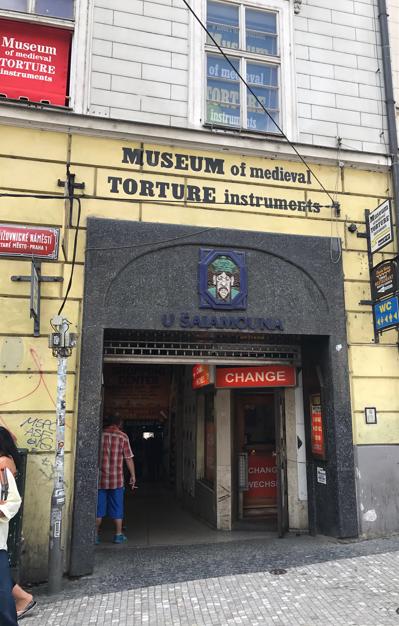
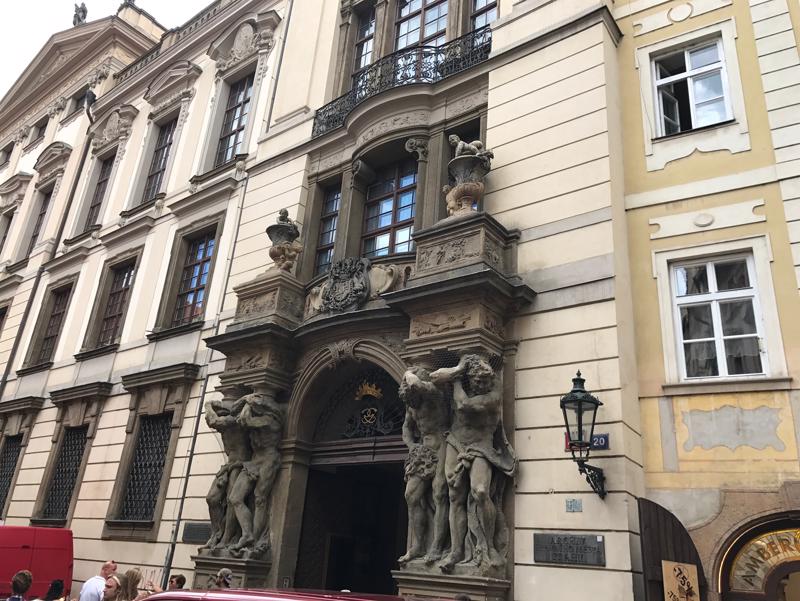
We also found a concert starting at 6:00pm and bought some tickets so we secured our seats.
Then we decided to return to the Jewish Ghetto and go through the range of buildings that make up the amazing Prague Jewish Museum. The museum is actually seven sites that are combined to tell the story of Jewish history in Prague. The seven sites are: The Maisal Synagogue, the Pinkas Synagogue, The Klausen Synagogue, the Spanish Synagogue, The Ceremonial Hall, The Old Jewish Cemetery and the Old New Synagogue Each of these tell part of the amazing story of Jewry on Prague for the last 1000 years.
The Maisel Synagogue is the summary of the key aspects of the Jewish Ghetto. It includes a video of a digital model of how the whole place looked in the 1700s. it is actually a video of an amazing model
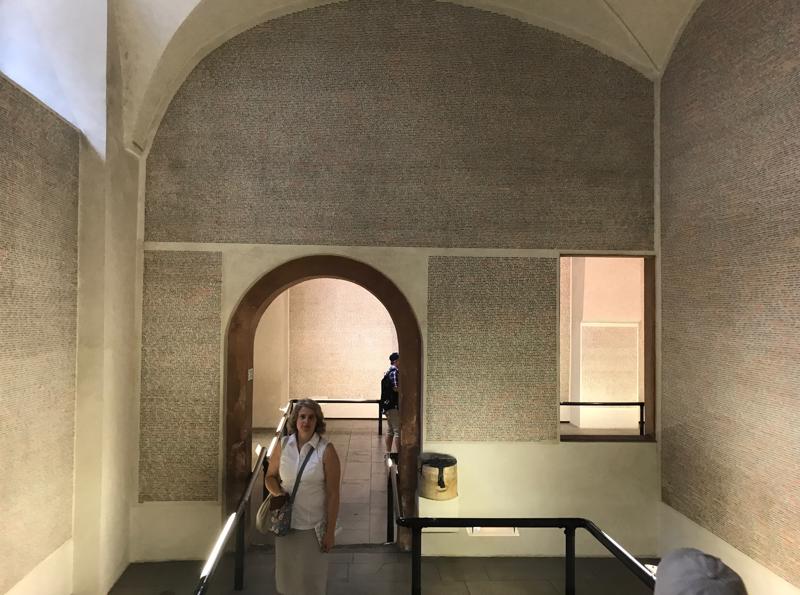
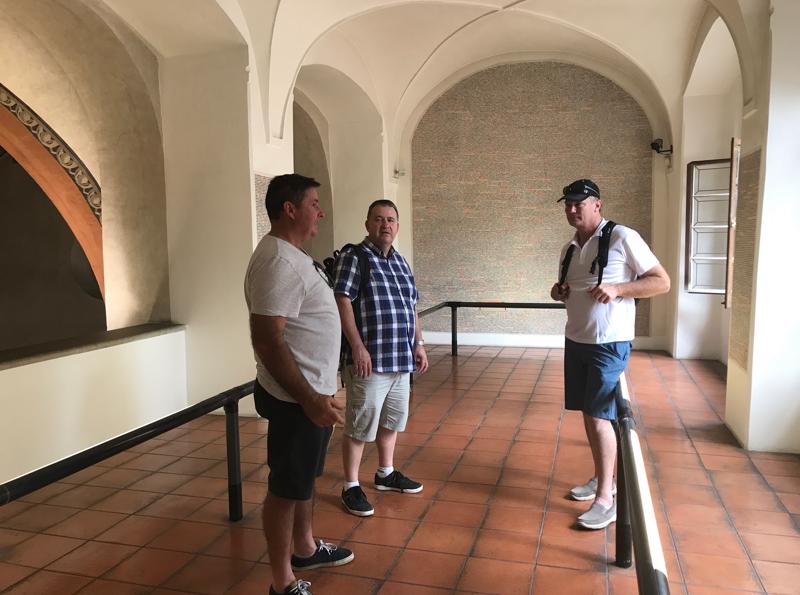
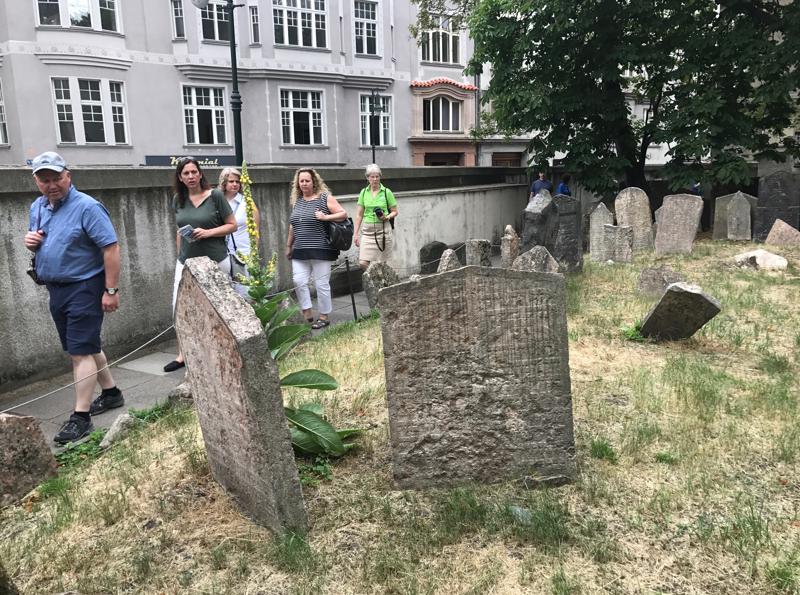
built in the 1700s by a Jew who was living in the ghetto at the time.
The Pinkas Synagogue has been set up as a memorial for the Czech Jews who died in WW2 genocide. There are 80,000 names listed on the walls of six rooms. The writing is small, the writing covers the walls from top to bottom and the list is seemingly endless. It is a testimony to the cruelty of man and the deep-rooted antisemitism that is part of the European story. The names of Hanna Holman’s parents and family members are on the walls here somewhere, but we couldn’t find them, mainly because we didn’t know what town her parents were from. There were also some very tragic drawings on display from children from the Terezin Concentration Camp which is about 60kms from Prague and a transit/work camp where the Jews from Prague were taken by the Germans.
The Old Jewish Cemetery has tombstones from 400 years of history.
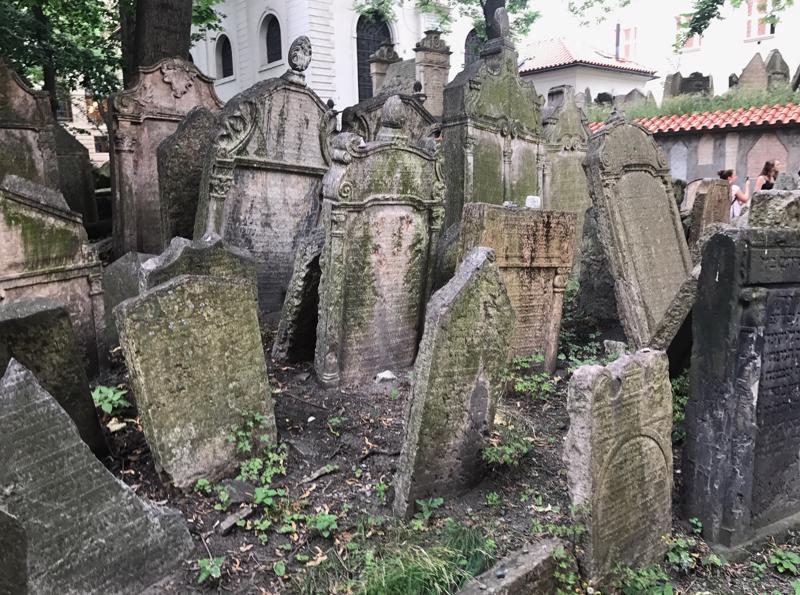
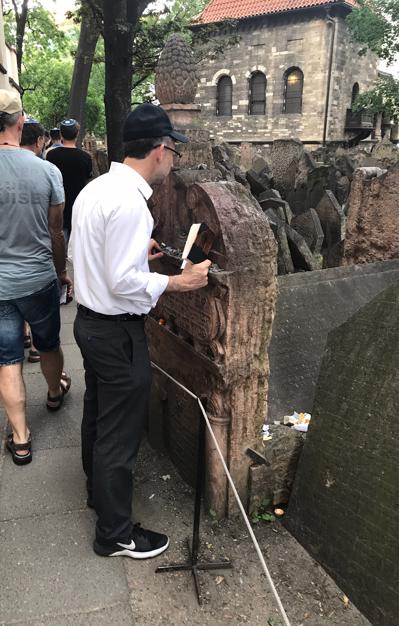
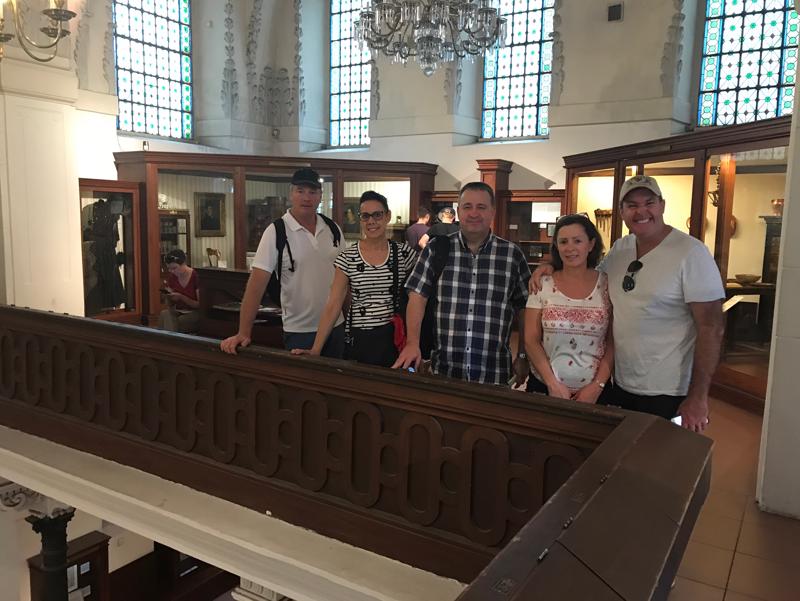
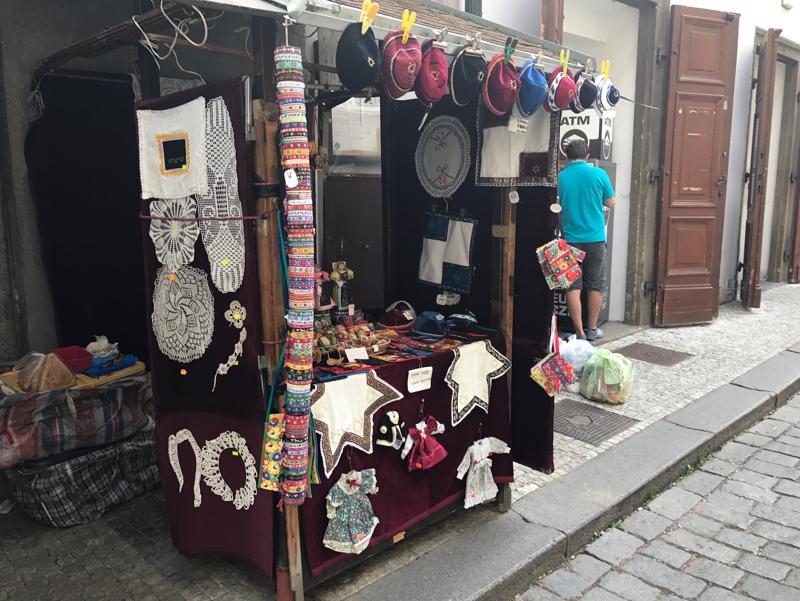

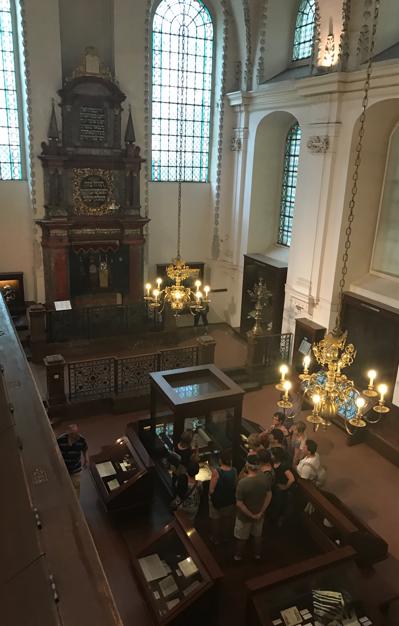
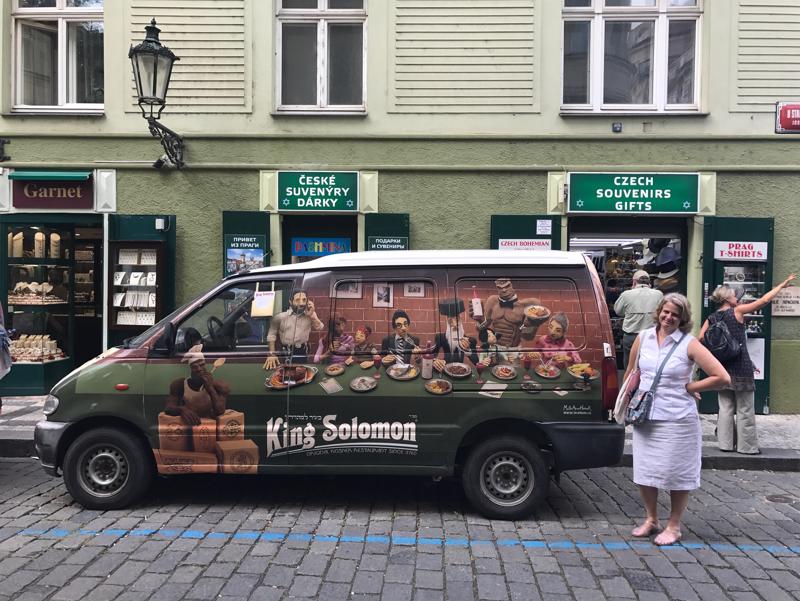
There is also a famous Jewish Rabbi buried there Rabbi Judah Löw ben Betzalel who invented the Jewish legend of Golem.
The Ceremonial Hall was used to prepare dead bodies for burial in the cemetery. The Jewish Burial Society carried out the cleaning and preparing the bodies for burial as well as assisting the families and community mourn. The Jews did not use coffins, just shrouds. The bodies were buried on the day of death of possible.
The Klausen Synagogue was built in 1570 and is now set up as a museum of Jewish religious customs. There are incredible exhibits including very Old Hebrew Bible Texts.
The Old-New Synagogue is the oldest building in the group, built in the 13th century. An amazing old building. The synagogue is still set up as an active synagogue and the names of community members

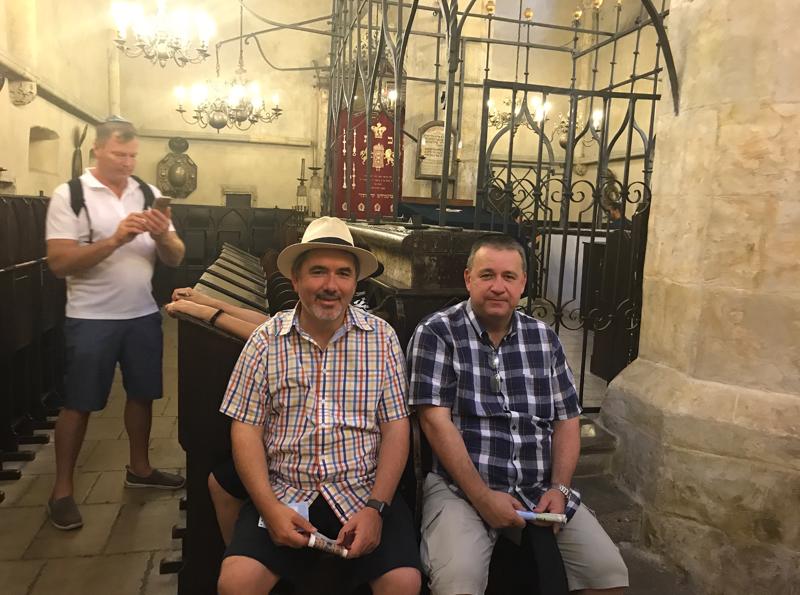
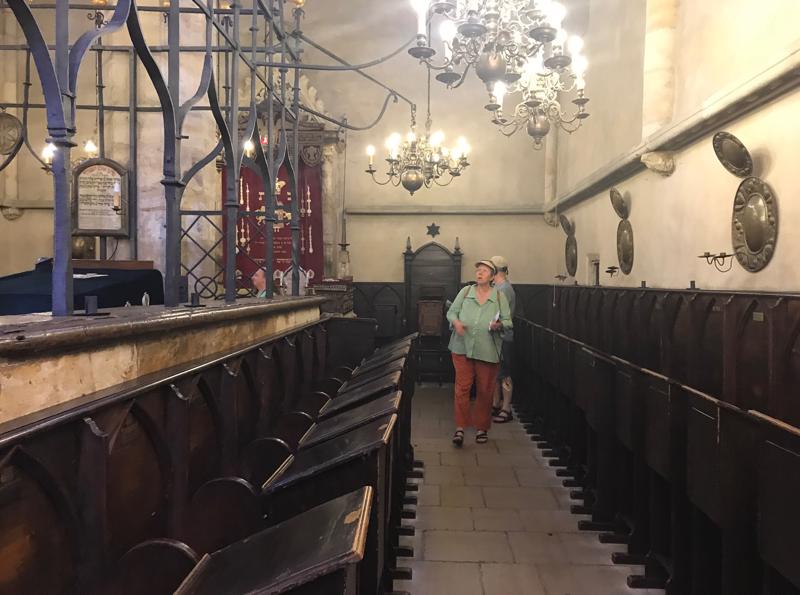
are on their seats, with a book stand in front of each wooden chair. The synagogue is built in stone with very thick walls. Even the cabinet holding the Torah at the front is built of very thick stone.
The walk through the significant buildings of the Jewish Ghetto provides a unique and meaningful insight into the long history of the Jewish community in Prague.
Priscilla and I then walked across town to locate the textile and wool shop in Prague to buy new knitting needles and wool for the next knitting project. Priscilla also broke her knitting needle which needed to be replaced.
At 5:30 pm we found our way to the Concert Venue, the beautiful Mirror Chapel in Clementium. It was a string quartet of musicians from the Dvorak Symphony Orchestra with an additional violin soloist
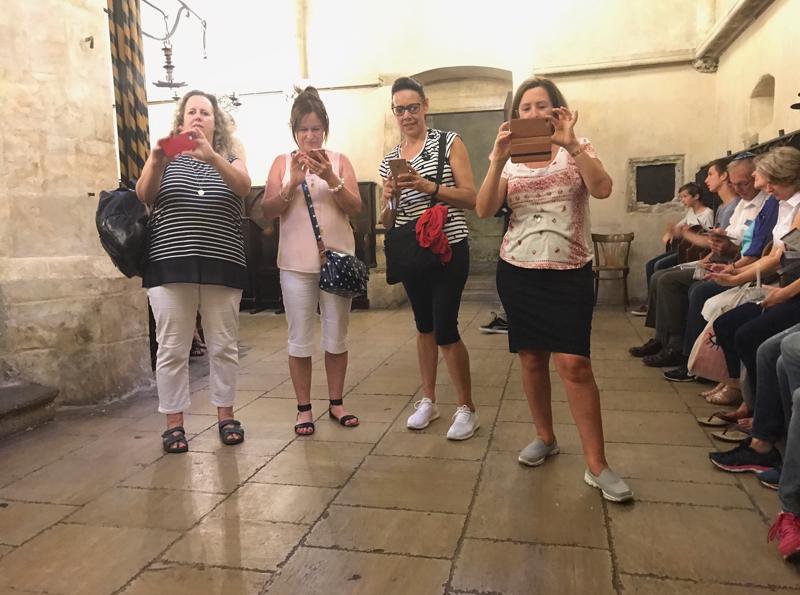
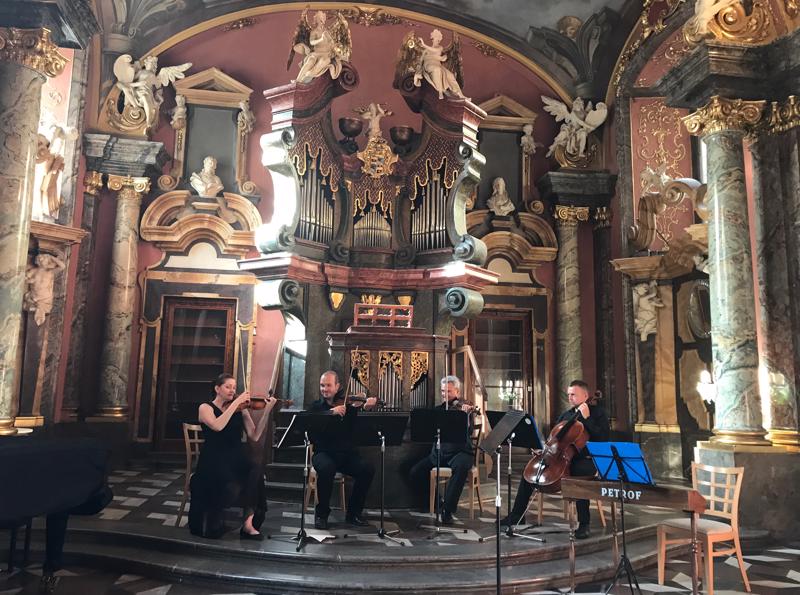
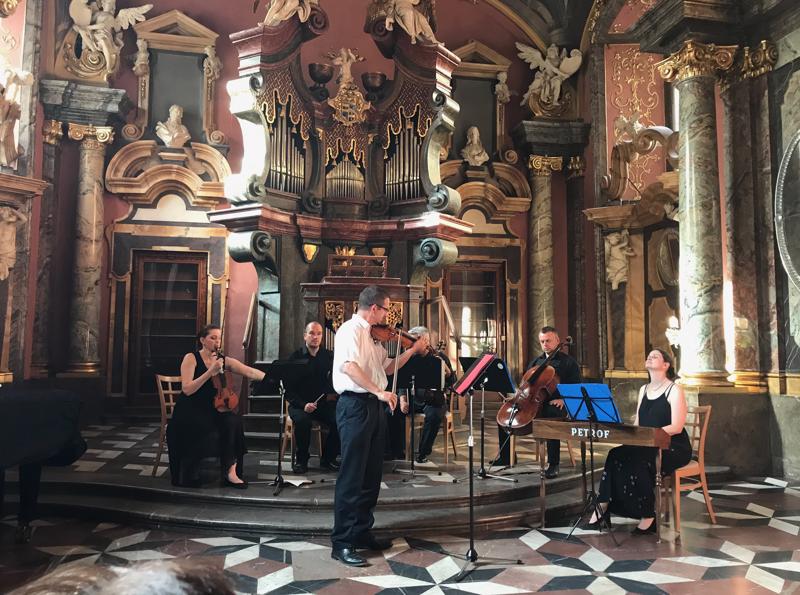

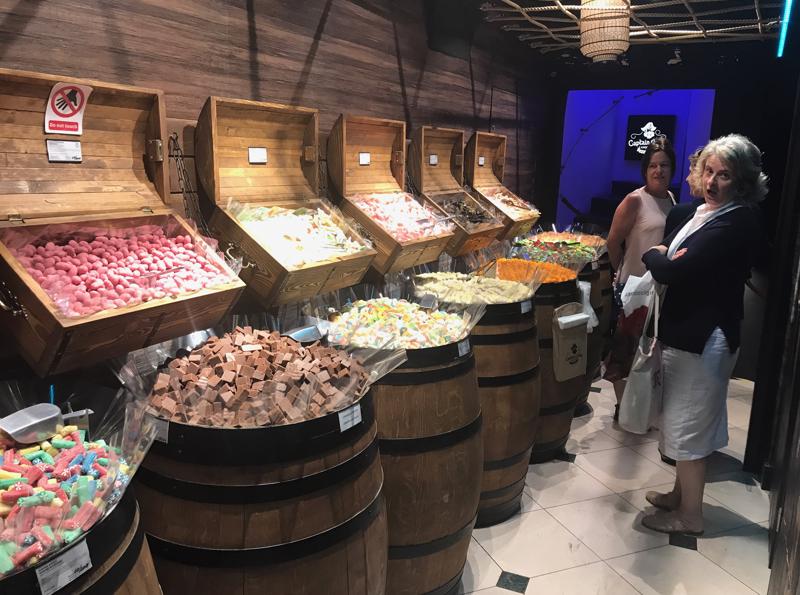
and a harpsichord. The program included: the Overture from Carmen by Bizet, three pieces by Dvorak, The Moldau by Smetana and the Four Seasons by Vivaldi. It was a high-quality performance in a church with exceptional acoustic qualities. It was a mesmerising performance. The organ in the chapel was played by Mozart when he was in Prague.
The evening meal was in a restaurant with live acoustic guitar music. I had the famous goulash, a local delicacy which is served in many of the restaurants in Prague.
In the evening we had a last walk around the old city streets admiring the architecture and absorbing the atmosphere of this Bohemian time capsule. It is a unique and beautiful fairytale city. We travelled back to the hotel by subway to sleep our last night in Prague.

1.
The Big Day Arrives
2.
Prague - the Tour Begins
3.
Bratislava and Budapest
4.
Budapest to Vienna
5.
Vienna Day Tour
6.
Vienna to Munich
7.
Munich to Lucerne
8.
Lucerne
9.
To Milan and Venice
10.
Venice
11.
From Venice to Rome
12.
Rome
13.
To Florence and Pisa
14.
Genoa and the French Riviera
15.
Cannes to Paris
16.
Paris
17.
Paris - the Tour Ends
Share your travel adventures like this!
Create your own travel blog in one step
Share with friends and family to follow your journey
Easy set up, no technical knowledge needed and unlimited storage!